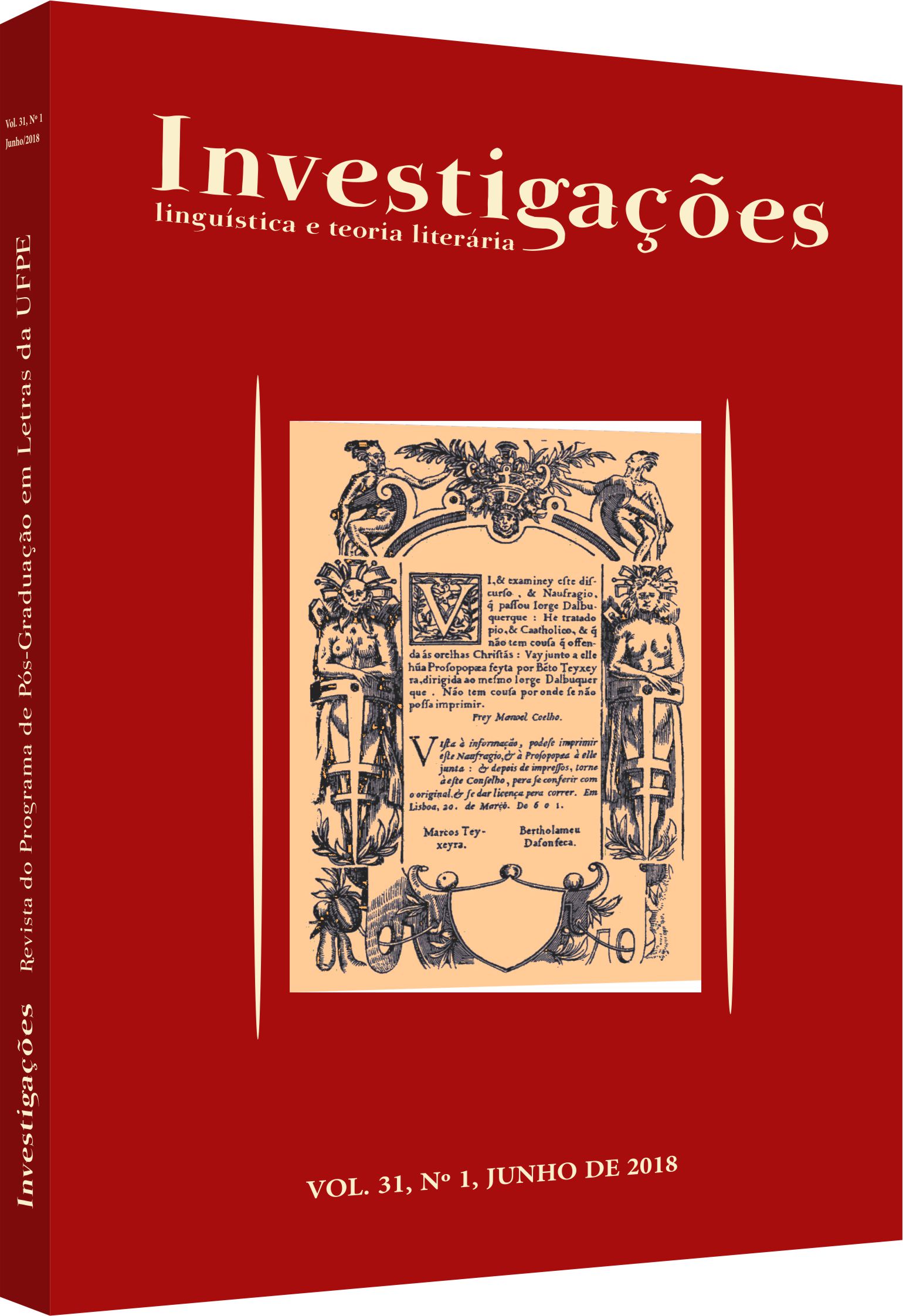Duas leituras de a “Fábula de Anfíon” de João Cabral de Melo Neto e a polêmica do estruturalismo no Brasil
DOI:
https://doi.org/10.51359/2175-294x.2018.237776Abstract
O trabalho objetiva, através das análises críticas de Luiz Costa Lima e José Guilherme Merquior do poema “Fábula de Anfíon” de João Cabral de Melo Neto, refletir o debate em torno da recepção do estruturalismo no Brasil. Para tanto, serão considerados os textos, “A traição consequente ou a poesia de Cabral” presente na obra Lira e Antilira (1968) de Costa Lima e “Nuvem civil sonhada”, presente em A astúcia da mimese (1972), de José Guilherme MerquiorReferences
BASTOS, Dau. Luiz Costa Lima: uma obra em questão. Rio de Janeiro: Grammond, 2010, p.128
MELO NETO, João Cabral. Obra completa. Rio de Janeiro: Nova Aguillar, 1994.
CAMPOS, Haroldo de. “O lugar de Luiz Costa Lima”. In: GUMBRECHT, Hans Ulrich. ROCHA, João César de Castro. Máscaras da mímesis: a obra de Luiz Costa Lima. Rio de Janeiro: Record, 1999. p. 150.
CRESPO, Angel e GÓMEZ, Pilar Bedate: “Realidad y forma en la poesía de Cabral de Melo Neto”. Madrid: Revista de Cultura brasileña, 1964.
DOSSE, François. História do Estruturalismo. Tradução de Álvaro Cabral; revisão técnica de Maria Mansor D’Alessio. Bauru: Edusc, 2007. 2 v
LIMA, Luiz Costa. Lira e Antilira: Mário, Drummond, Cabral. Rio de Janeiro: Topbooks, 1995
MERQUIOR, José Guilherme. A astúcia da mimese: ensaios sobre lírica. Rio de Janeiro: Topbooks, 1997
_____, José Guilherme. Formalismo e tradição moderna: o problema da arte na crise da cultura. São Paulo: É realizações, 2015.
_____, José Guilherme. O estruturalismo dos pobres e outras questões. Rio de Janeiro: Tempo brasileiro, 1975
Downloads
Published
How to Cite
Issue
Section
License
Copyright (c) 2018 Ana Karla Canarinos

This work is licensed under a Creative Commons Attribution 4.0 International License.
Authors who publish with Revista Investigações agree to the following terms:
Authors retain copyright and grant the journal right of first publication with the work simultaneously licensed under the Creative Commons Attribution 4.0 International (CC BY 4.0) license that allows others to share the work with an acknowledgement of the work's authorship and initial publication in this journal.
Authors are able to enter into separate, additional contractual arrangements for the non-exclusive distribution of the journal's published version of the work (e.g., post it to an institutional repository or publish it in a book), with an acknowledgement of its initial publication in this journal.
You are free to:
Share — copy and redistribute the material in any medium or format for any purpose, even commercially.
Adapt — remix, transform, and build upon the material for any purpose, even commercially.
The licensor cannot revoke these freedoms as long as you follow the license terms.
Under the following terms:
Attribution — You must give appropriate credit , provide a link to the license, and indicate if changes were made . You may do so in any reasonable manner, but not in any way that suggests the licensor endorses you or your use.
No additional restrictions — You may not apply legal terms or technological measures that legally restrict others from doing anything the license permits.

